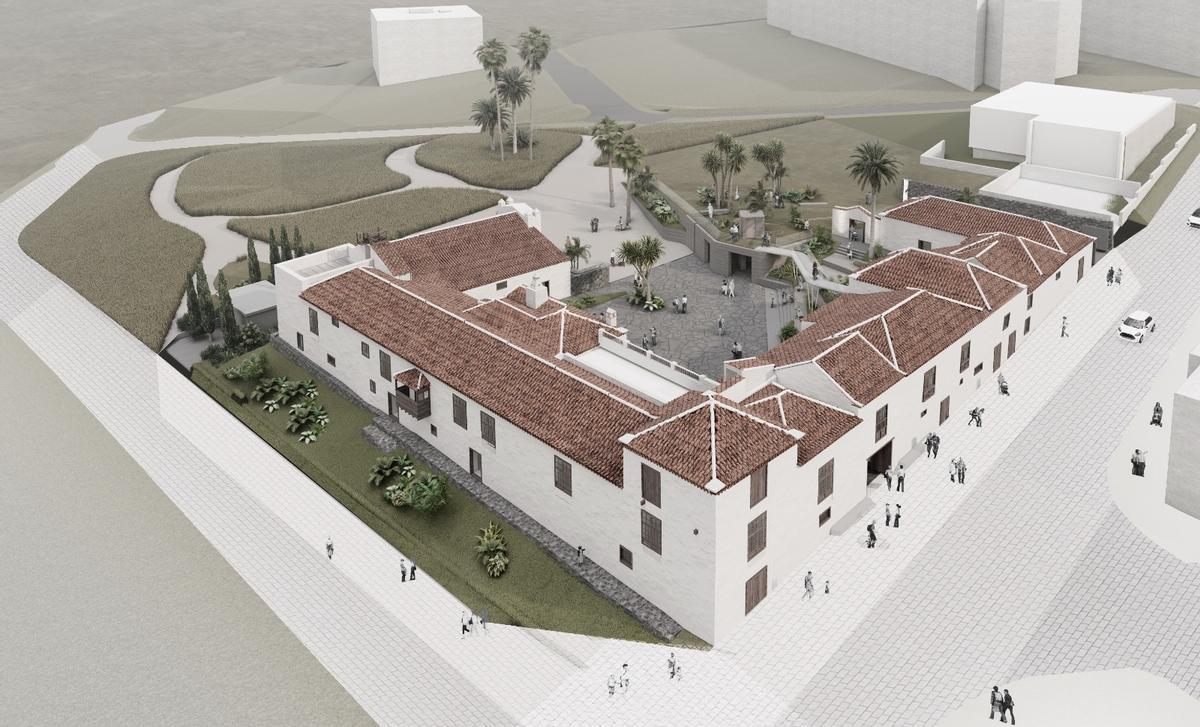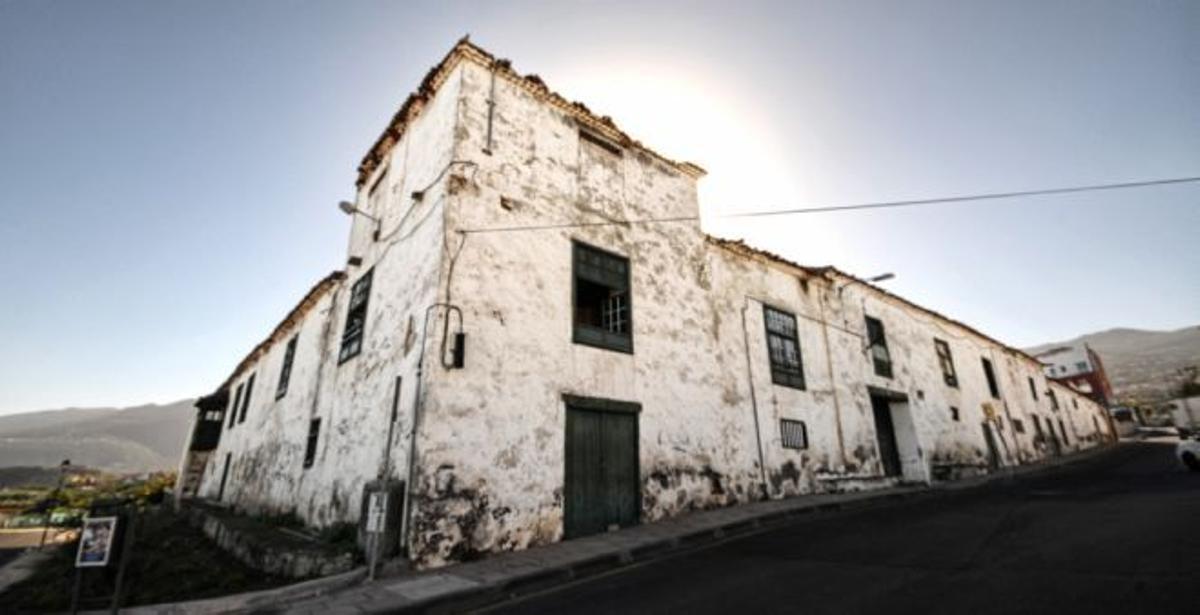The Realejos has initiated the process to restore a treasure from Tenerife’s heritage, a remarkable example of the island’s traditional rural architecture. This treasure is the Hacienda de la Gorvorana, which boasts a rich history and impressive architectural significance, situated on the street that currently carries its name in the Realejos. Through the rehabilitation of this hacienda, the Realejos aims to remove it from Spain’s endangered Red Heritage list, as it has been left unattended for numerous years.
The mayor of the Realejos, Adolfo González, announced on Friday, February 7, that a key milestone has been published to commence the recovery process of the Hacienda de la Gorvorana and to salvage it from its derelict state: the launch of the first phase of rehabilitation works, with a budget of 4.9 million euros.
The history of this grand rural house dates back to the period of the Castilian conquest of Tenerife at the close of the 15th century. According to the organisation that manages the red list of Spanish heritage, Hispania Nostra, Captain Francisco Gorvalán, who accompanied Fernández de Lugo during the Castilian victory over the Guanches, received these lands through allocation, cultivated them, and thus named them. The foundations of what would later become THE HACIENDA DE LA GORVORANA were established on these lands.

This is how the Hacienda de la Gorvorana will appear following its restoration. / Ed
In 1699, it was established as a Mayorazgo by Juan de Grimón, the lady of la Gorvorana, who then inherited it and later passed it down to the Marquise de Breña. Subsequently, in 1765, it was transferred by marriage to the Marquis of Mejorada. In 1877, it was sold to the Leal brothers, Canarian returnees from the Americas. During the latter half of the twentieth century, the hacienda began to lose land to emerging urban developments, as noted by Hispania Nostra.
The hacienda was managed by stewards appointed by its owners. In 1757, Matías de Gálvez, who later became Viceroy of New Spain and father of another Viceroy of New Spain, Bernardo, was dispatched to Tenerife to oversee the hacienda. He was also the brother of José de Gálvez, the creator of the General Archive of the Indies and an active participant in the American War of Independence, supporting the rebels.
Characterised by its abundant irrigation waters, this hacienda was regarded during the 18th century as the most profitable estate of the upper Realejos. Originally dedicated to the Malvasía wine trade, it transitioned to banana cultivation after the collapse of this market.

This is the current state of the Hacienda de la Gorvorana, which will be refurbished by the Realejos City Council. / Hispania Nostra
The complete project for the reform of this historical property was established in 2023 and has been spearheaded by the municipal government of Realejos. The total cost of all phases will be 8.2 million euros, as outlined by a team of architects including Fernando Arocha Ferreiro, Carlos Arocha Isidro, Pedro Domínguez Anadón, and Deiene González Uriarte.
Given the high cost of the project, the City Council is receiving aid from the Government of the Canary Islands and the Cabildo de Tenerife. In fact, Mayor Adolfo González expressed appreciation for “the willingness to communicate and the concern shown by those involved with the Cabildo de Tenerife and the Government of the Canary Islands, along with the respective departments concerned with historical heritage and tourism, following our team’s ongoing efforts to find solutions and financing avenues that would facilitate the execution of a project we first presented in mid-2023 and which has now become a reality.”
The second phase is estimated at 3.2 million euros, and the City Council of Realejos assures that it is already pursuing various financing options for this additional segment of the overall rehabilitation budget for the hacienda.
Once renovated and reclaimed by the people of Realejos, the Hacienda de la Gorvorana will feature administrative areas, two exhibition rooms, a multipurpose area within the central outdoor patio exceeding 750 square metres, a conference room capable of accommodating around 100 individuals, workshop classrooms, study rooms, and a cultural use area for the temporary residence of artists or educators, as well as changing rooms, restrooms, and a cafeteria. Additional engineering provisions and facilities for fire protection and machinery will be integrated into an old agricultural banking area located in the basement of the annex building.

Noelia González, the Councillor for Urbanism, Adolfo González, the mayor of Realejos, and architect Luz de los Ángeles Oramas presenting the rehabilitation of the Hacienda de la Gorvorana. / Ed
This property has always been of particular interest due to the frescoes created by the artist Francisco Bonnín, which decorated the interior walls of the house. During the preparatory process leading to the drafting of the project, these were carefully documented and studied, removed and sent for restoration to be returned once the announced rehabilitation works begin.
The Hacienda de la Gorvorana is deeply connected to the agricultural activities for which it was constructed, comprising various structures designed for agricultural purposes: a mill, a winery, stables, warehouses, and sheds, among others. There are also several facilities (such as a hermitage, pond, shelter, and threshing floors) as well as satellite residences, including settlements or residences for workers, and even the subsequent loyal house built in 1879 by brothers José and Antonio Leal y Leal.
The initial constructions that led to the establishment of the Gorvorana house are believed to date back to the 17th century, solidifying into a defined entity by the 18th century. Furthermore, one of the battlements of the Barbacana (tapee) facing south bears the inscription “July 21, 1756”. This is a rural home belonging to the typology of the Treasury, featuring one, two, and three levels with a layout achieved through the occupation formula that encompasses several bays around a central patio.
The Mayor of Realejos noted during a press conference that this project is “extremely significant for the municipality of Realejos and for the conservation and restoration of its historical heritage, specifically regarding this iconic building located in the heart of Toscal Longuera.















